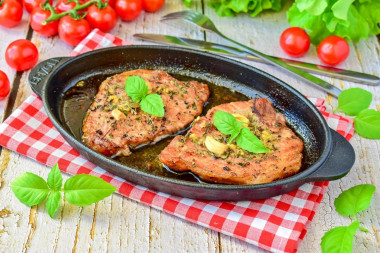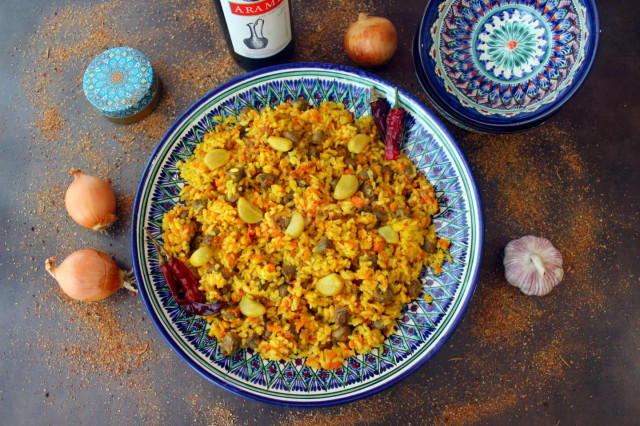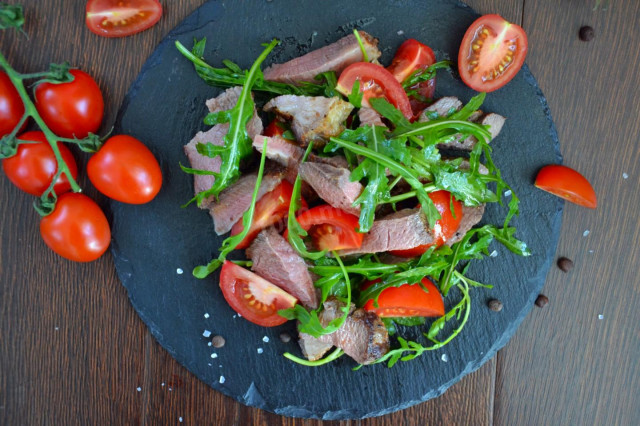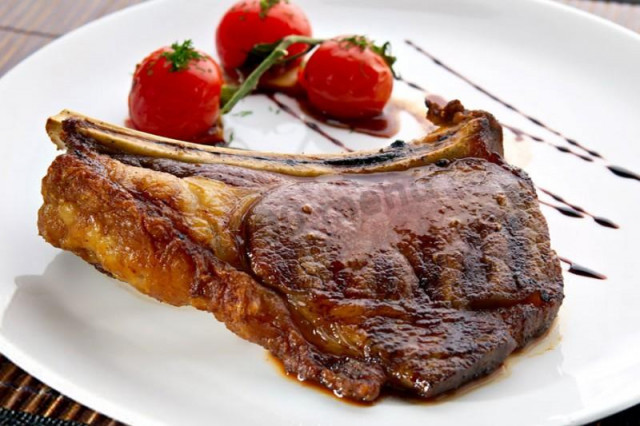Composition / ingredients
Step-by-step cooking
Step 1:
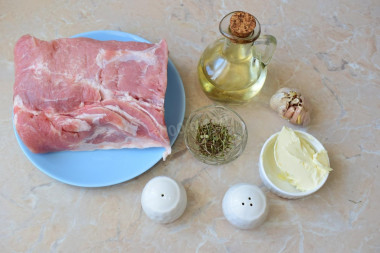
How to make pork carbonate in a frying pan? Prepare the necessary ingredients for this. Rinse the pork carbonate in running water and dry it with a paper towel to remove excess moisture from it.
Step 2:
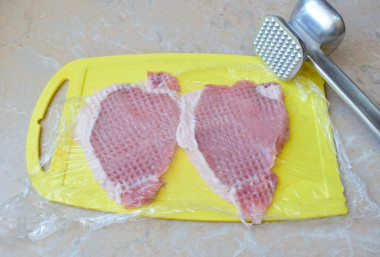
Cut the carbonate into portions, across the fibers, 1.5-2 cm thick. Beat the meat a little with a kitchen hammer. To prevent the meat from tearing at the edges when beating, cover it with cling film.
Step 3:

Sprinkle salt and ground pepper on each piece. Rub salt and pepper into the meat on both sides.
Step 4:

For cooking, take a completely metal frying pan to put it in the oven. Heat the pan to a hot state and pour a little vegetable oil. Put the meat in a frying pan and fry it on high heat on both sides until golden brown. It is not necessary to fry the meat until it is ready. It is enough just to fry outside so that all the juices are sealed inside the piece. It will take 3-4 minutes.
Step 5:
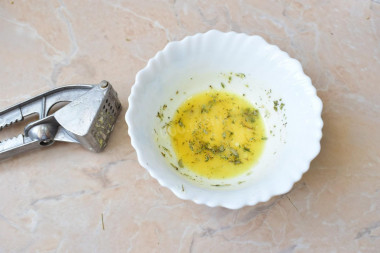
Melt the butter separately. Peel a few cloves of garlic and pass through the press immediately into the bowl to the melted butter. Add salt and thyme.
Step 6:
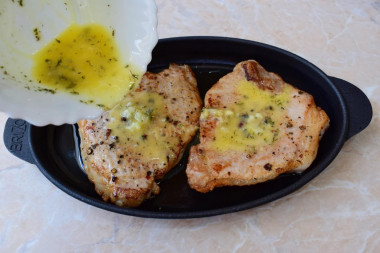
Pour oil with spices and garlic over the fried meat right in the pan.
Step 7:

Put more garlic cloves on top of the meat. Put the pan with the meat in the oven, preheated to 180 degrees, for 15-20 minutes. Be guided by your oven.
Step 8:

After baking, the meat will slightly decrease in size and brown. Remove the pan from the oven, transfer the meat to a plate and serve. Bon appetit!
For this recipe, it is better to take not frozen, but fresh meat, otherwise the finished meat risks getting dry.
You can check whether the oil has warmed up well enough in a frying pan in a simple way. Lower a wooden spatula into it. If bubbles have gathered around it, then you can start the frying process.
Important! An incorrectly selected frying pan can ruin even the best recipe. All the details on how to choose the perfect frying pan for different dishes read here .
Caloric content of the products possible in the composition of the dish
- Pork fat - 333 kcal/100g
- Pork meat - 357 kcal/100g
- Pork - low-fat roast - 184 kcal/100g
- Pork chop on a bone - 537 kcal/100g
- Pork - schnitzel - 352 kcal/100g
- Pork Shoulder - 593 kcal/100g
- Boar's leg - 113 kcal/100g
- Pork - 259 kcal/100g
- Garlic - 143 kcal/100g
- Thyme - 101 kcal/100g
- Dried thyme - 276 kcal/100g
- Thyme - 276 kcal/100g
- Butter 82% - 734 kcal/100g
- Amateur unsalted butter - 709 kcal/100g
- Unsalted peasant butter - 661 kcal/100g
- Peasant salted butter - 652 kcal/100g
- Melted butter - 869 kcal/100g
- Vegetable oil - 873 kcal/100g
- Salt - 0 kcal/100g
- Spices dry - 240 kcal/100g



